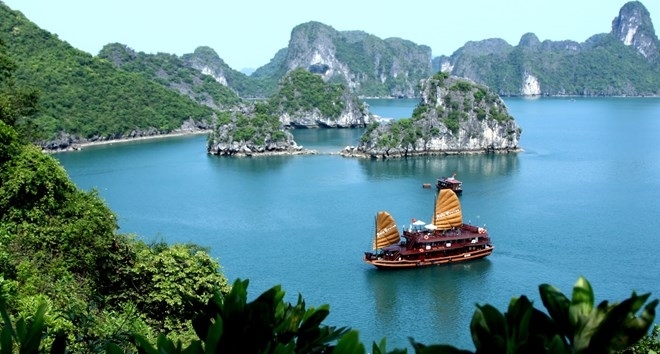


|
In her post, she recalled that she and her group of friends paid
US$100 per person for the tour with a local travel agent in Hanoi after being
shown a glossy brochure depicting a journey on a beautiful cruise ship.
However, contrary to the ads, the group was escorted to a junk
boat with a dilapidated interior and bad services, turning their tourist
experience into an absolutely horrific nightmare. When she complained to the
travel agency, the group received a US$30 refund to share between the six of
them.
But what is more of greater concern is that her complaints were
republished on Australian news sites, generating a huge number of views and
comments. Many people have shown concern about the quality of tourism
services in Vietnam and questioned whether or not they should visit or return
to Vietnam.
The incident has brought discredit to Vietnam’s hospitality
sector in the eyes of foreign visitors.
Soon after being notified of the case, Quang Ninh provincial
People’s Committee directed an inspection and verification process, and a
document was issued on May 21, confirming that cruise ship used to operate in
Ha Long Bay in the past but it had been banned from the bay since August 2017
and moved to nearby waters in the neighbouring Hai Phong City.
At the same time, representatives from the People’s Committee of
Ha Long city in Quang Ninh province reaffirmed that their revisions showed no
cruise ship in Ha Long with such poor facilities and services as reported by
the Australian tourist.
The announcements partly showed the dishonest advertising
information of the travel agent as well as a flaw in the management of
tourist activities by local authorities, which has consequently allowed the
operation of downgraded cruise ships.
Although the investigation concluded that the Australian
tourist’s bad experience did not happen in Ha Long Bay, Ha Long city’s
tourism sector forcefully and unexpectedly became the victim of the dishonest
operations of a Vietnamese travel agent.
Therefore, when the Australian tourist’s story was published in
English on foreign news pages, the reputation of UNESCO-recognised Ha Long
Bay and Vietnam’s tourism image in general was significantly damaged.
On the afternoon of May 21, the Vietnam National Administration
of Tourism (VNAT) sent an order to the Hai Phong city People’s Committee,
requesting the city’s functional agencies to strictly handle the business
which provided the poor and misleading service for the Australian group of
visitors, and suspend its operations if necessary. The ship owner was asked
to apologise and compensate the tourists.
The order also asked tourist businesses to abide by the
applicable regulations in ensuring the quality of their services.
Although the actions were taken swiftly and properly, the
incident also served as a lesson for Vietnam’s tourism sector. Relevant
sectors and departments cannot wait for an incident to occur before fixing
the current flaw in their management of tourist activities.
Stronger and stricter handling of violations and shady
operations of tourist businesses and travel agents as well as tighter
management and supervision of local authorities and functional tourism
agencies are needed in a joint effort to turn tourism into a key economic
sector and raise Vietnam’s position on the world’s travel map.
|
Source:
NDO